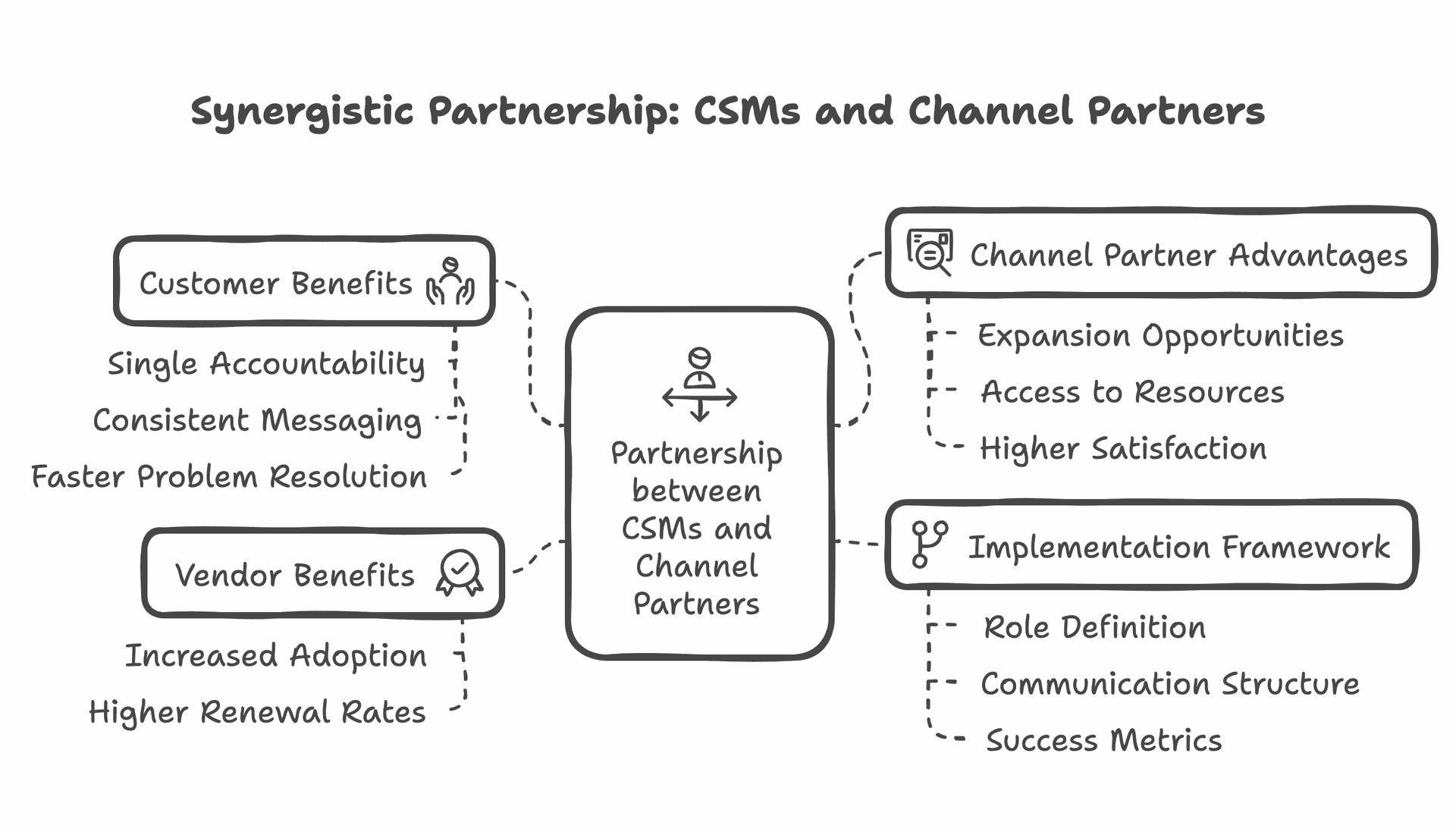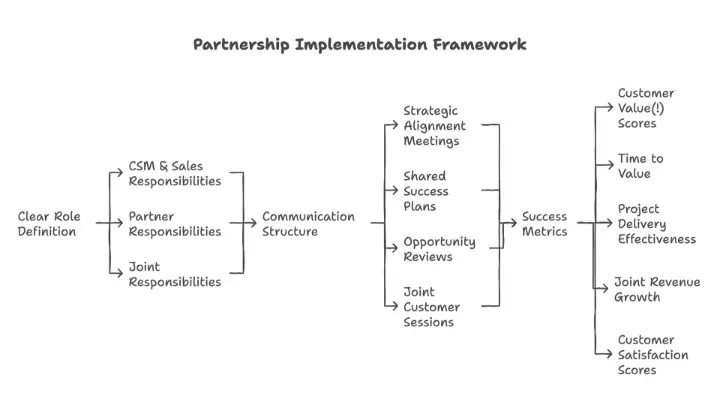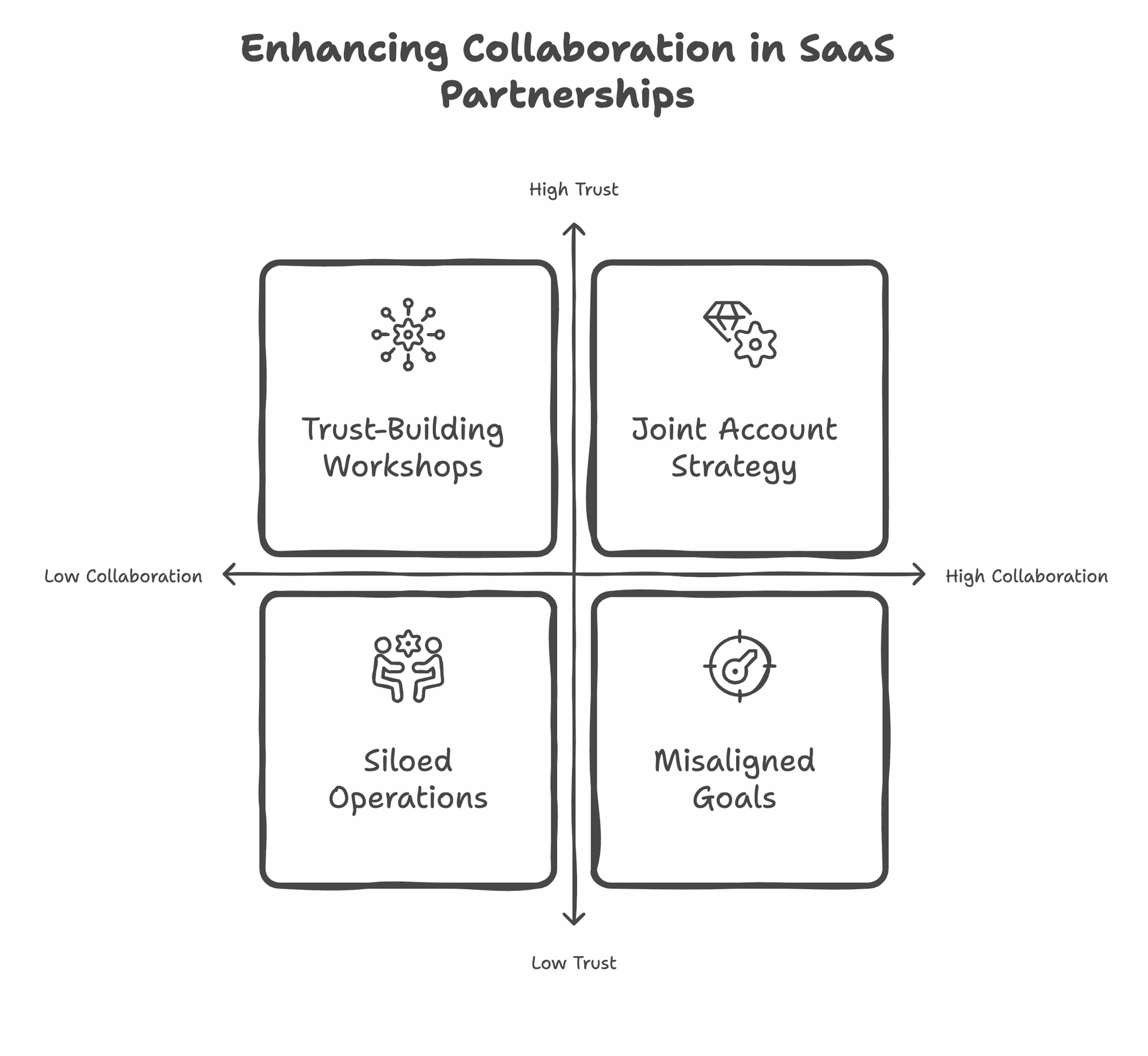Collaboration between Customer Success Managers (CSMs) and channel partners creates a powerful ecosystem that drives value for everyone involved, especially the customer. Let's explore why this partnership is crucial and how to make it work effectively.
The Evolution of Customer Success Partnerships
Channel partners bring deep customer relationships and industry expertise, while CSMs bring product knowledge and success methodologies. When these strengths combine, customers get better outcomes. One of our enterprise customers saw a faster time-to-value and higher adoption rate when their CSM and channel partner aligned their efforts.

Understanding each stakeholder's perspective

For Customers:
- Single point of accountability while accessing expertise from both teams
- Consistent messaging and recommendations
- Faster problem resolution through coordinated support
- More comprehensive solution design combining product and industry expertise
For Channel Partners:
- Earlier visibility into expansion opportunities
- Access to vendor resources and product expertise
- Higher customer satisfaction leading to longer-term engagements
- New revenue streams through proactive service offerings
For Vendors:
- Increased product adoption and customer satisfaction
- Higher renewal rates through partner-aligned success programs
- Scaled customer success coverage
- Better market intelligence through partner insights
Making the CSM-Partner relationship work

Ever wondered how successful companies make their CSM and partner relationships thrive? The secret lies in a clear framework that everyone understands and follows. Think of it as a well-choreographed dance where each partner knows their steps. Oh, BTW, ensure your colleague - the channel manager - is involved in every step and supports this.
First, let's talk roles. Your CSM brings the product magic - they know every feature, every success story, and how to grow accounts. Your partner? They're bringing deep industry know-how and local expertise. Together, they create a powerful duo when planning accounts and measuring success. Do NOT forget to include your sales rep into this framework. They might or might not like to be involved - either way keep them in the loop at all times.
Communication is where the magic happens. Monthly strategy sessions keep everyone aligned, while shared success plans ensure everyone's working toward the same goals. When partners and CSMs regularly review opportunities together and meet customers as a united front, the impact is powerful.
But how do you know it's working? That's where metrics come in. You track everything from customer health scores to how quickly customers see value. You measure how effectively projects are delivered, watch the joint revenue grow, and - most importantly - keep a pulse on customer satisfaction.

This isn't just theory - we've seen partnerships double their effectiveness when following this framework. The key? Keep it simple, stay consistent, and always focus on delivering value to your customers.
Are there issues? Of course there are. Is it easy? Well, it can be but often it's not. No partner is the same and some are more willing to work with you than others. Make an example by working really well with one engaged partner and show your channel manager that this works. Let her/him share the success with the other partners. If there is value and benefit, they will come and talk.
The best part? You can start implementing this tomorrow. Pick one element, make it work, then build from there. Success follows when everyone knows their part and plays it well.
This partnership model represents the future of customer success - one where vendors, partners, and customers align for mutual growth. When executed well, it creates a sustainable ecosystem that drives value for all stakeholders.